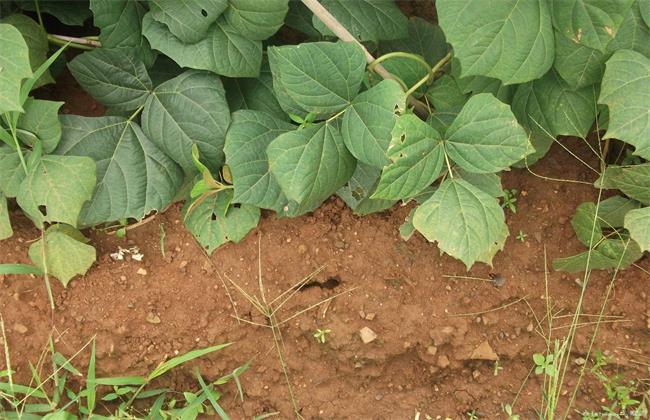High-yielding cultivation techniques of pea
Peas, also known as vegetable peas, are vegetables native to China and are usually planted in spring. Edible tender pods, can also wait for aging peeling beans to eat. It is a common legume vegetable grown in the south. Most people have eaten peas, but have not grown peas, so if someone wants to plant their own, you can take a look at my brief introduction on pea planting below.

I. selection of land and land preparation
Although the root distribution of pea is not deep, it also needs to grow in the soil with perfect fertile structure layer, preferably in the soil with good ventilation and fertilizer retention, and the sticky soil is easy to yellowing the root without breathing. It is the most suitable for growth when the pH value of the soil is neutral and acidic. The land should be ploughed deeply and broken once by rotary ploughing, then mixed with basic fertilizer, and then covered with fine planting soil. Exposure, spray. Planted in a week.
2. Seed selection and sowing
The varieties with strong disease resistance and strong branching ability are selected for seed selection. In general, seeds do not need to invade seeds to accelerate germination, they only need to be mixed and sterilized to sow seeds. The Yangtze River basin is mostly planted in spring, but it can also be planted in autumn. Sowing can set up low ridges, and then dig a small hole 5 centimeters deep on the ridge every 20 centimeters, put 2 seeds in each pit, cover the soil and water thoroughly, and replant at about the same time as the seedlings emerge. You can also raise seedlings in a seedbed and then transplant.
III. Fertilizer and water management
In the seed germination, the need for water, so that the seed germination, but can not let the seed stagnant water, will column seed. It is usually poured with a small amount of water every two days until the seedlings are ready. A certain amount of water can be increased at the seedling stage, and a small amount of nitrogen fertilizer should be added to the water. At this time, it is necessary to develop vegetative growth and promote the seedlings to grow vines. Some nitrogen fertilizer and water can be applied every once in a while until podding. However, in the podding period, more phosphorus and potassium fertilizer should be applied, but no nitrogen fertilizer should be applied, which can mainly promote fruit growth, water can be irrigated less, and diseases can be avoided with high humidity. Pea pods for many times to chase foliar fertilizer at intervals of half a month to replenish nutrition to avoid element deficiency. After the peas have withered, the picking is over. If you want to plant them in the coming year, you can fertilize the land for winter.
Fourth, build a fight and pick the heart.
Before emergence, bamboo strips need to be inserted into the soil to form rows of shelves for peas to climb, provide enough space for growth, prevent diseases, ventilate and penetrate light, and promote growth. At the same time, it is convenient to manage picking. When the pea grows long enough, it is necessary to pick the heart and turn to reproductive growth. And the plant needs to be tied to the shelf to prevent it from falling.
Planting peas is completed in accordance with the above processes, but there are many small details you can ponder, study, learn, sum up specific experience, I believe you can do a good job of planting peas.
Related
- Where is it suitable to grow horseradish in China? it is expected to see the middle altitude horseradish in Alishan.
- How to prevent tomato virus disease reasonably? (Control methods included)
- Many people like to plant towel gourd on the balcony. What are the main points of this method and management?
- What crops can chili peppers be mixed with?
- Fertilization techniques and matters needing attention in Tomato
- What are the grafting techniques for peach seedlings in spring?
- Harm and control methods of root swelling disease of Chinese cabbage
- What are the pests of sweet potatoes? How to prevent and cure it?
- Symptoms, causes and Control methods of navel Rot in Tomato
- The cause of "Cucumber rotten bibcock" in Farmers' planting Cucumber and its Control Plan



